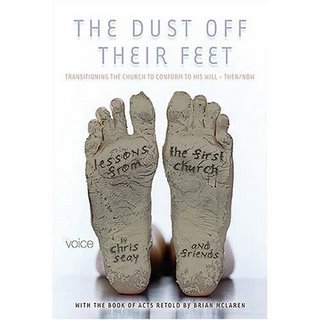
Synchronicity. Carl Jung, the Swiss psychologist is credited with coining the term. For Jung it described the "temporally coincident occurrences of acausal events." In plain language, it is “the experience of having two (or more) things happen coincidentally in a manner that is meaningful to the person or persons experiencing them, where that meaning suggests an underlying pattern. It differs from coincidence in that synchronicity implies not just a happenstance, but an underlying pattern or dynamic that is being expressed through meaningful relationships or events.” (Wikipedia)
Believers sometimes have a different word for this. We call it “providence,” or “God’s guidance.” We experience God’s bringing together a series of events that seem to be more than coincidental. I experienced that recently. I’ll try to unravel the story so that it makes some sense.
Back in February I was invited to spend an afternoon at the Truett Theological Seminary thinking with a Doctor of Ministry seminar about the phenomenon that has come to be known as “The Emerging Church Movement” (ECM). [I’ll be doing that again in a couple of weeks.] I did a trial run of my presentation one Sunday evening at
Preparing for that presentation led me to read about the movement (those inside it sometimes refer to it as a conversation rather than a movement), its leaders and its expressions. I’d been exposed to some of its expressions over the past few years and have been watching with interest. I read some of the movement’s critics and the responses to the critics and the critics’ responses to their critiques. I listened to lectures and sermons on the internet to those who were attempting to describe or understand the ECM. (Don’t leave me yet. The synchronicity is coming.)
Along the way I developed a motivation to write. I have had an idea for a book rattling around in the back of my skull for the past two or three years. I wanted to write about the book of Acts as “narrative ecclesiology” or “narrative missiology.” I wanted to explore the ways the stories in Acts make clear to the church through the ages what she is supposed to be and to do.
The ECM is all about narrative theology and mission. The movement itself focuses on taking the gospel into the emerging culture of postmodernity. I noticed parallels between the earliest church emerging from the cocoon of Judaism and the synagogue and the 21st century church emerging from the forms and traditions of Western evangelical Christianity. I thought that writing about that might actually be helpful to both those involved in the ECM and to those who remain heavily invested in the traditional church. (We’re getting close to the synchronicity thing.)
So one Sunday evening I accompanied my family to a worship service at Ecclesia, one of the expressions of the emergents in
I wanted to talk to him about my book idea and to get his thinking. I said, “Chris, I’ve got something I’d like to talk to you about.” He said, “I have something I’ve been wanting to talk to you about.” So we arranged to get together at the church’s coffee shop on the following Tuesday. (Almost there.)
On Tuesday I explained to him what I was thinking about and he chuckled. He popped the top on his Mac and opened a file. He explained to me that he was engaged in a project with Thomas Nelson publishers, called “The Voice.” It is a kind of “re-telling” of the biblical story using poetry, art, scholarship, and narrative (go to www.hearthevoice.com). The first installment was about to be released at the time, a re-telling of John 13-21 called The Last Eyewitness: The Final Week. Chris Seay did the paraphrasing of the story,
The second installment of The Voice is to be called Dust Off Their Feet: Transitioning the Church to Conform to His Will Then/Now. It is a re-telling of Acts. A series of essays will be published to accompany this portion. (Click link to pre-order the book. It is due to be published in October). Chris had wanted to talk to me about writing an introductory and a concluding essay to this book. (Click links to read an unedited draft of the essays. )
I asked, “What did you have in mind?” He said, “What you just described.” That was the synchronicity. Lots of things coming together—lives, interests, an artist from
I mention all that because, first, I am excited and encouraged to have the opportunity to contribute a few words to this process. But more than that, I tell this story to reiterate the confidence we must learn to live with that God is at work and that our task is to join him. It is not about us.
Sometimes we are blessed to see things come together. Sometimes we must simply trust that Romans
No comments:
Post a Comment